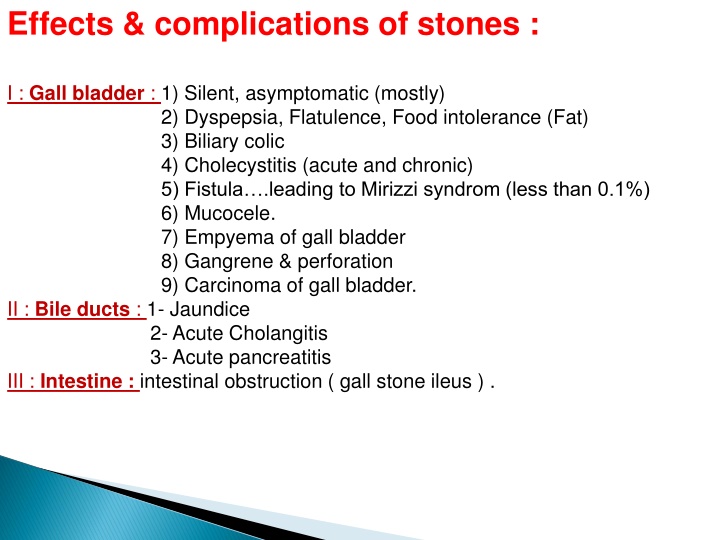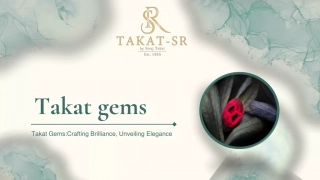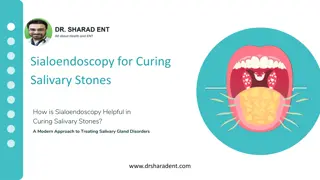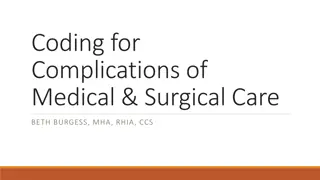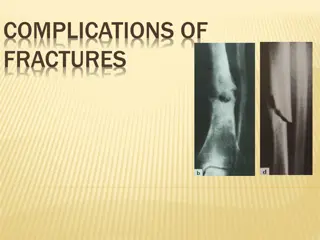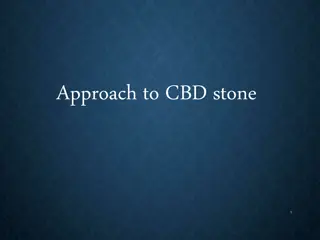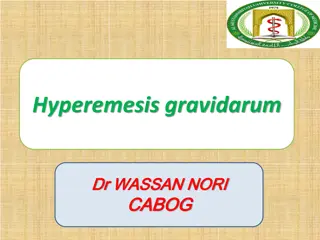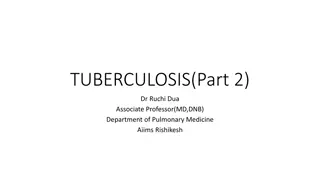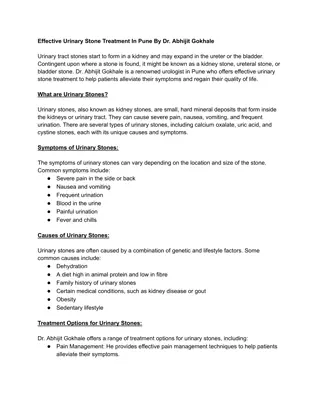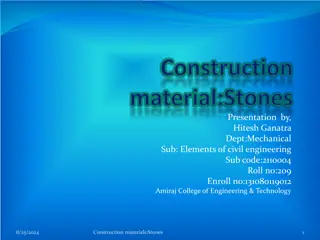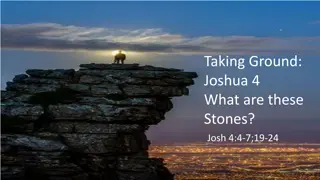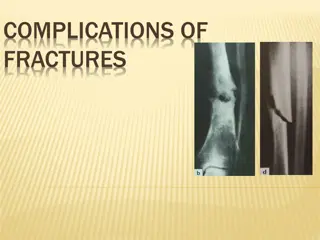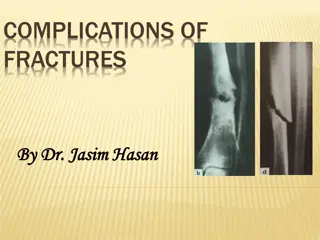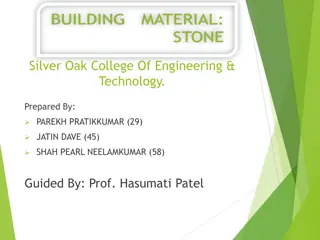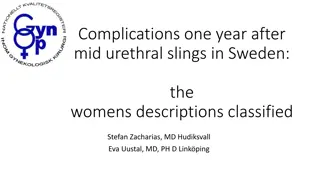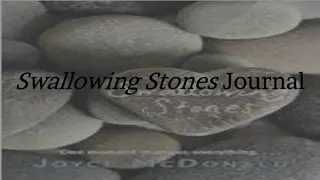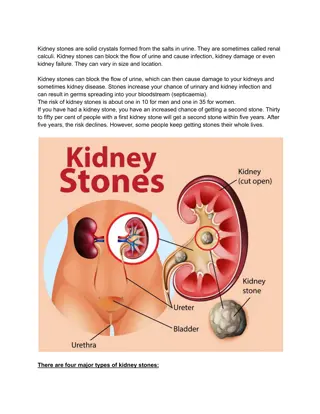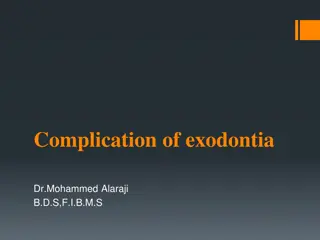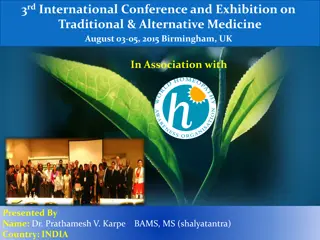Effects & complications of stones :
Gallbladder stones can lead to a range of effects and complications, from silent asymptomatic cases to more serious conditions like cholecystitis, fistula formation, mucocele, and even carcinoma. Symptoms may vary from dyspepsia and biliary colic to more severe presentations such as empyema and gangrene. Understanding the clinical features and outcomes of gallstone-related conditions is crucial for timely diagnosis and management.
Download Presentation

Please find below an Image/Link to download the presentation.
The content on the website is provided AS IS for your information and personal use only. It may not be sold, licensed, or shared on other websites without obtaining consent from the author.If you encounter any issues during the download, it is possible that the publisher has removed the file from their server.
You are allowed to download the files provided on this website for personal or commercial use, subject to the condition that they are used lawfully. All files are the property of their respective owners.
The content on the website is provided AS IS for your information and personal use only. It may not be sold, licensed, or shared on other websites without obtaining consent from the author.
E N D
Presentation Transcript
Effects & complications of stones : I : Gall bladder : 1) Silent, asymptomatic (mostly) 2) Dyspepsia, Flatulence, Food intolerance (Fat) 3) Biliary colic 4) Cholecystitis (acute and chronic) 5) Fistula .leading to Mirizzi syndrom (less than 0.1%) 6) Mucocele. 7) Empyema of gall bladder 8) Gangrene & perforation 9) Carcinoma of gall bladder. II : Bile ducts : 1- Jaundice 2- Acute Cholangitis 3- Acute pancreatitis III : Intestine : intestinal obstruction ( gall stone ileus ) .
+ + and flatulent dyspepsia +then chronic cholecystitis 8.Mucocele 9. Empyema 10. Gangrene and perforation
Outcome of Gall Stone Clinical Features 1. Silent Most of patients , Asymptomatic 1. Flatulant Dyspepsia Hx: Dyspepsia; R hypochondrail Pain or epigastric pain (more often dull and constant) + flatulence+ intolerance of Fatty food 1. Biliary colic 10-20% of patients of gall stone, Hx: Several episodes of pain which is sever (minutes-hours)+ nausea &vomiting for few weeks then period of relief for few months as the stone dis-impacted back into gall bladder Ex: negative Murphy s sign + No fever UlS: no signs of acute cholecystitis but there is stones Blood invest.: no significant change in laboratory data (may be slight rise in liver enzyme and bilirubin) 1. Acute cholecystitis Hx: R hypo&/ or epigastric pain more sever Ex: Tenderness+ Murphy s sign positive+ low grade fever UlS Scan: shows signs of acute cholecystitis: distended gall b.+ presence of stones+ thickened wall of gall bladder+ pericholecystic fluid collection Blood invest.: leukocytosis +moderate elevation in LFT 1. Empyema of Gall Bladder Same of acute cholecystitis + history of acute attack that has not relieved + more pain+ More tenderness+ more fever+ inc in pulse rate+ might be palpable mass in R hypochondrial region (gall bladder surrounded by omentum) 1. Perforation Sign and symptoms of peritonitis usuall localized. 1. Chronic Cholecystitis Hx: History of acute attack that has already been relieved+ pain less in severity and frequency + might be flatulent dyspepsia+ nausea and vomiting Ex: No fever or tenderness or Murphy s sign negative (shrinkage gall bladder) U/S: shrinkage gall bladder+ presence of g. stone+ No sign of acute Blood investing.: Often Normal
Cholecystitis : 1) Acute & 2) chronic - Calculous 85 95 % - Acalculous 5 15 % Cholecystitis : Acute : Inflammation of gall bladder wall . Acute : M.O. : 1- E.coli . 2- klebsiella . 3- streptococcus faecalis .4- bacteroid . 5- clostridia & typhoid (uncommon & serious). M.O. : Causes of acute cholecystitis : 1-Stone in 90% impacted in Hartmann s pouch or obstructing cystic duct . 2- Stasis 3- Pancreatic juice reflux 4 CBD stone . 5- Bacteremia . 6 Vascular effect of D.M. sickle hypertension collagen disease cystic artery thrombosis ischemia . Causes of acute cholecystitis :
Clinical features of acute cholecystitis : 1- sudden onset . 2- 30 70 years & > 60 years 25% - 35% . 3- White caucasian > black people . 4- Heavy fatty meal . 5- Pain (colicky). 6- Nausea & vomitting . 7- Fever > 38 C . 8- Boas s sign . 9- Jaundice ? 10- Murphy sign . 11- Tenderness & rigidity . 12- Palpable tender mass . DDx : 1- Appendicitis . 2- Perforated peptic ulcer . 3- Acute Rt. Pyelonephritis 4- Liver abscess . 5- Rt. Lower lobar pneumonia. 6- Hepatitis 7- Pancreatitis 8- Herbes zoster . 9- Myocardial infarction .
The sequelae of attack : 1- Resolution ; disimpaction of the stone & drainage , slipping back of the stone. 2- Impacted stone persist gangrene , mucocele , empyema . 3- Perforation . 4- Chronic . Dx:.1- ultrasound . 2- Radio isotop scan ( HIDA ) . 3- L.F.T. 4- WBC ___ leucocytosis . Treatment : A- Conservative Rx followed by laparoscopic Cholecystectomy (after 6-8 weeks). B- Laparoscopic Cholecystectomy . A- Conservative : 90% of cases the symptoms subside. 1- N.G. tube & nil per mouth . 2- Antibiotics e.g.; cefazolin , Cefotaxim , gentamicin . 3- Analgesia & antispasmatic .
B- Cholecystoctomy : Early 2 3 5 days . Delayed 6 weeks . -Laproscopic - rarely Open (if laparoscopic is not accessible or in case of conversion) N.B. : Conversion rate in acute cholecystitis more than in elective ( delayed ) but still conversion not failure of laparoscopic cholecystectomy Chronic cholycystitis : Thickened fibrotic wall of G.B. with stone(s) . Symptoms : 1- Pain : episodes of Rt. hypochondrial pain of varying severity & interval ( 3 12 hours) after . 2- Flatulent dyspepsia , fullness , belching , heartburn & distension . 3- nausea & vomiting . Dx: As acute . Rx: Cholecystectomy
. Saint triad : 1- Gall stone(s) . 2- Diverticulosis . 3- Hiatus hernia . It is important to find which one is the cause for dyspepsia Post cholecystoctomy complications : 1- Bleeding . 2- Jaundice . 3- Adjacent organs injury. 4- Biliary leak fistula ; due to : a) Slipped ligature b) Accessory duct . c) CBD. Injury or ischemia . d) Mirizzi syndrome . 5- Post cholecystectomy syndrome. Indications of cholecystoctomy. 1- Symptomatic gall stones. 2- Asymptomatic gall stone as prophylactic cholecystectomy (controversial) .
Indications of choledochotomy at cholecystectomy : 1- Stone in CBD. 2- Jaundice now or history . 3- Dilated CBD. 10 mm. 4- alkaline phosphatase . 5- Wide cystic duct & multiple small gall stones . Any way the trend now in this case is to continue in laparoscopic cholecystectomy and after operation send the patient to ERCP to remove the CBD stone
Treatment : 1- ERCP & sphineterotomy . 2- Choledochotomy : A- Supraduodenal choledochotomy stone removal and then T. tube or choledocho- duodenostomy . B- Transduodenal sphineterotomy & stone extraction .
Treatment : Cholecystectomy + excision of gall bladder liver bed + Hilar lymphadenectomy . Prognosis : -Poor. - 90% will die in one year . - 2 5% is 5 year survival .
